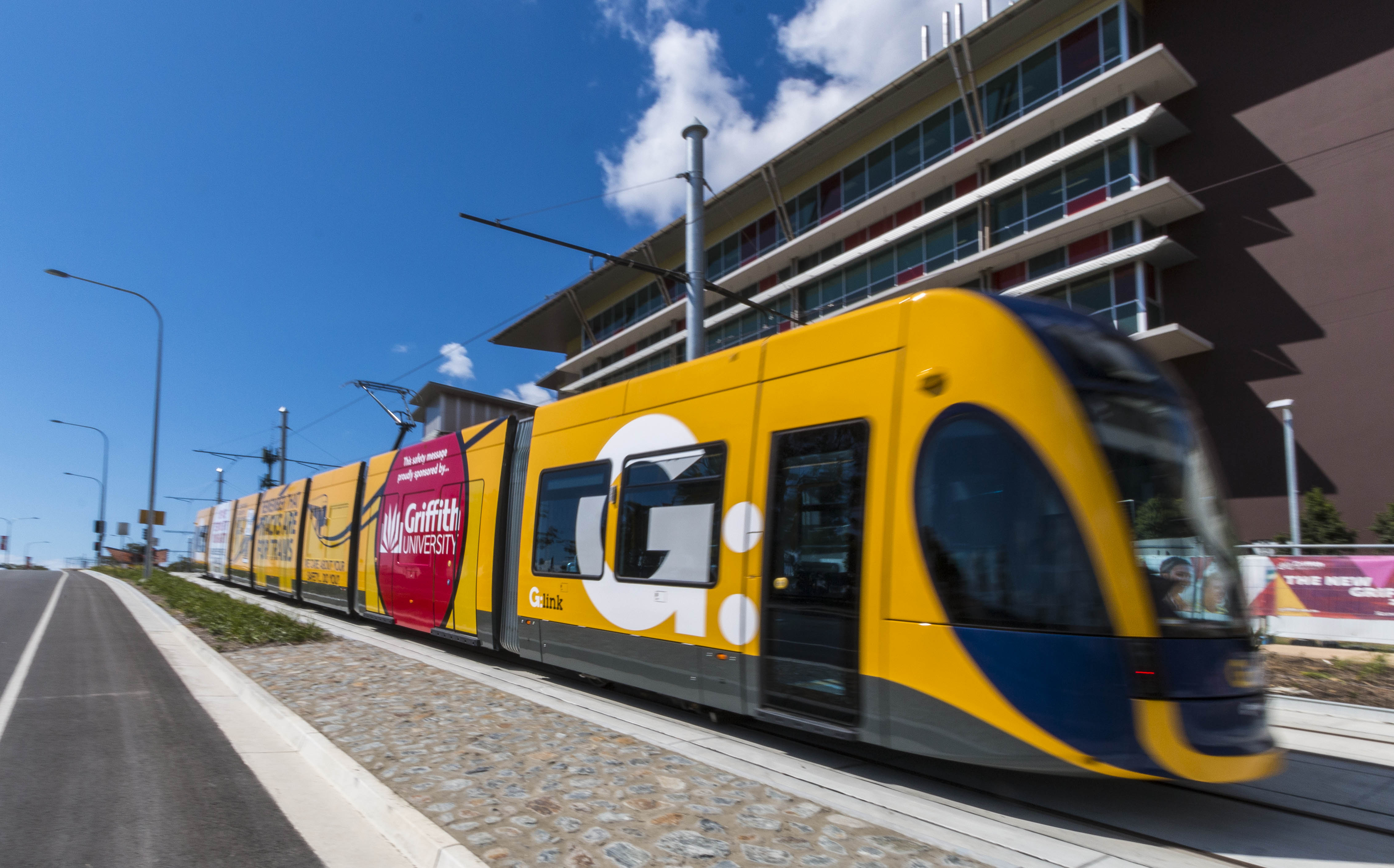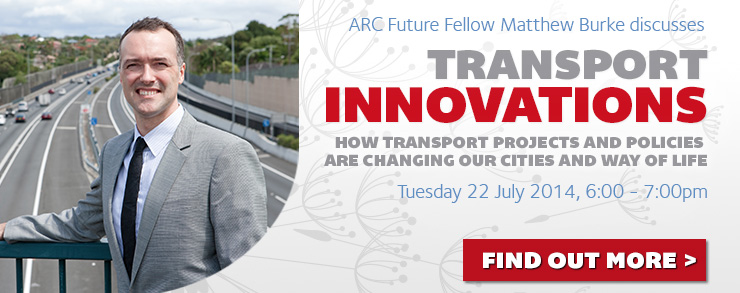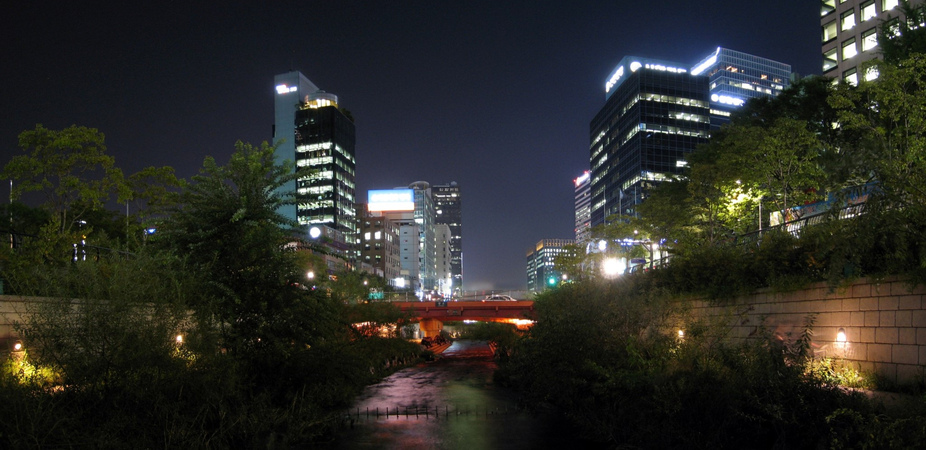“The light rail scheme is such a great natural experiment,” ponders Dr Matthew Burke a senior planning and transport researcher within Urban Research Program. “Can contemporary light rail really change the travel behaviour of citizens and tourists? Does it give move more passengers than buses? And which types of travellers are more willing to use light rail than others? The Gold Coast light rail will really help us answer these questions.”

The last public tram services in Brisbane ceased in 1969. Other than in Melbourne, and on one heritage line in Adelaide, no trams ran in Australian cities for decades. Suddenly that is all turning around and sleek modern light rail is back in favour. Sydney is vastly expanding its light rail networks. Perth is building the first stage of its ‘MAX’ system. Canberra wants one. And the Gold Coast has just opened the ‘G’, which promises to be just the first link in a city-wide network.
Following light rail’s resurgence is Dr Burke is undertaking a series of small projects focused around the Gold Coast light rail scheme funded via an Australian Research Council – Discovery Future Fellowship.
Jason Ward is the Communications and Stakeholder Director with GoldLinQ, the operators of the light rail, certainly expect it to have a positive impact on the Gold Coast. ”Stage one of the Gold Coast light rail is all about connecting the city’s key precincts, and providing sound transport infrastructure around which the city can grow. If the Gold Coast didn’t do something now in terms of providing a travel alternative, then moving between the precincts in what is an already congested corridor, would become problematic in the future. People will choose to live, work, and travel in new and different ways on the Gold Coast now that the light rail is here.”
A number of research activities are already underway in and around the light rail corridor. The work that’s most advanced is a collaboration between Griffith University and the urban design team at Gold Coast City Council that’s been underway for years already.
Dr Burke said “Associate Prof Neil Sipe and I have been assisting Council’s urban designers to plan for and study the impacts on public life around the light rail stations. A lot of effort has been put into the siting, the design and the treatments used around the stations. These decisions should help the stations fit seamlessly into local activity centres and enhance precincts such as Surfers Paradise and Southport. The Gold Coast has tried very hard to avoid the mistakes you see in places like Dubai where metro stations have poor connections into surrounding streets and where they produced really dull and lifeless spaces, even in dense urban areas. In Dubai the system is hard to get to and they missed all the benefits that better station and precinct planning can provide.”
To see how the better designed Gold Coast light rail precincts perform over time, students from Griffith University have been undertaking surveys to measure ‘street vitality’ along the corridor. The researchers hope to see evidence that the light rail will over the years encourage more people to come and spend time in these locations, and in turn to boost local economies.

“It may seem simple but we used a methodology developed by Danish researchers. Our students spent hours in each precinct measuring how many people are moving through, sitting, eating, recreating and generally using key spaces along the corridor, including at night. And we’ve been capturing this information well before the light rail opens. It’s given Council great insight into how residents and visitors are using these areas. Once the light rail opens, we will repeat the surveys, allowing us to directly compare what effect the project has had not just in the short term but over a longer period of time. This is one of the first research projects systematically capturing such impacts. It should provide clear evidence for what effects large public transport investments can have, and how we may improve station precinct planning and design in future. We may well learn lessons for how to keep improving as we expand the network and build new stations in future.”
Gold Coast City Council’s Senior Urban Designer, Ashley Mitchell, was enthusiastic about the research collaboration, saying, “The benefits of this research stretch beyond measuring the change in the city around the light rail system. It cements an already strong partnership between City of Gold Coast and Griffith University. It lays the foundation for future research and city planning, and provides local students with practical field experience on a real world project. Who knows, maybe some of the students working on the research now, might be working on future iterations as professionals in their field of choice.”
In other work, Dr Burke and his colleagues have commenced surveys of travelers in the light rail corridor before and after the system opens to assess changes in their travel behaviour. They are exploring property value increases from public transport and whether these effects could be used to help fund future public transport investments such as extensions to the light rail. They are modelling what changes in the land uses on the Gold Coast could do to help build patronage on the system, including where future employment, shopping and residential development might best be located. And they are trialing an intervention to encourage university students to choose to live in the corridor, as a way to solve traffic and parking problems around the Parkwood campus and the hospital.
Dr Burke said “It’s not easy for transport planners to get things right. But the light rail corridor should, over time, prove to be one of the best investments Gold Coast City has made. We hope our research can identify ways to boost the benefits of that investment and create a better city in the future.”
Find out more about Griffith’s Urban Research Program






